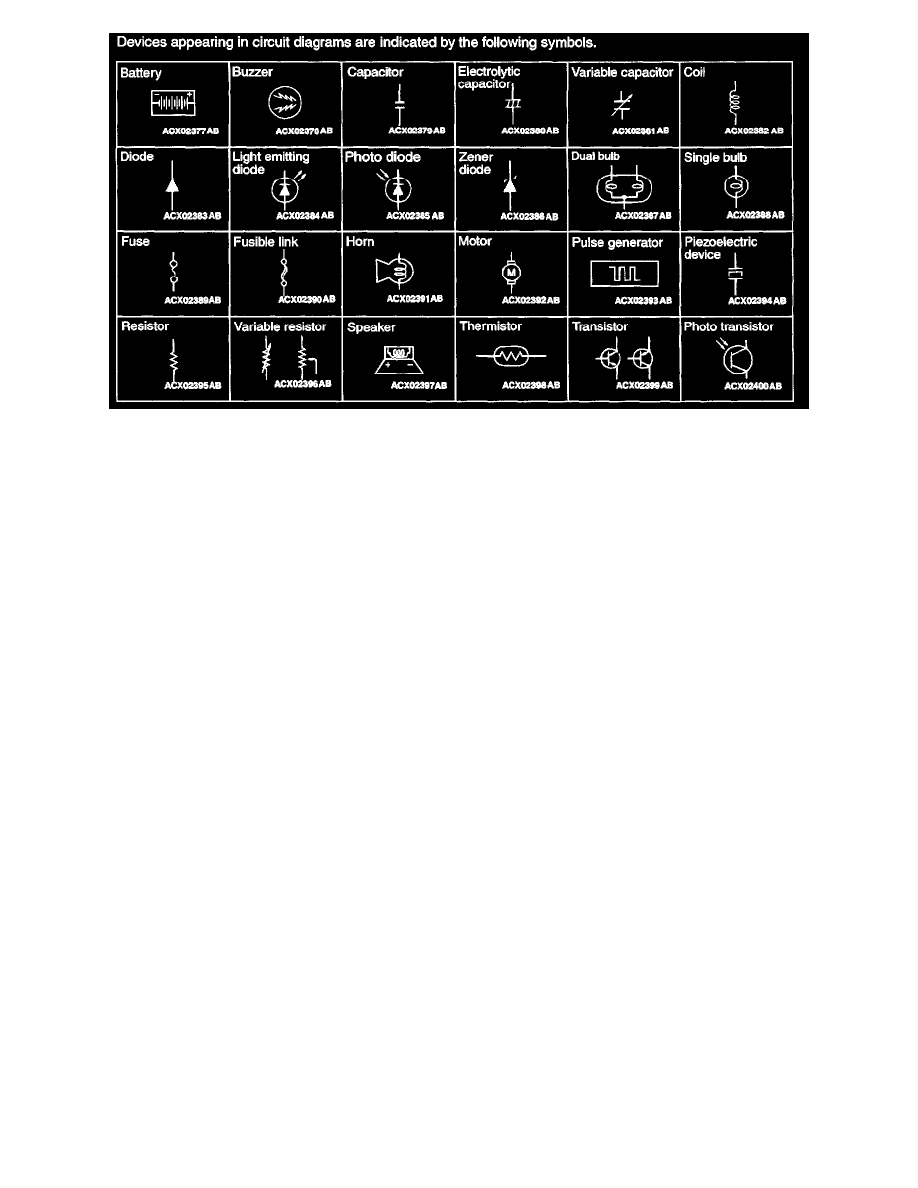Eclipse Spyder GS L4-2350cc 2.4L SOHC MFI (2001)

Symbols (Except Connector And Grounding)
Maintenance, Repair and Servicing Explanations
MAINTENANCE, REPAIR AND SERVICING EXPLANATIONS
This information provides explanations, etc. concerning procedures for the inspection, maintenance, repair and servicing of the subject model. Unless
otherwise specified, each service procedure covers all models. Procedures covering specific models are identified by the model codes, or similar
designation (engine type, transaxle type, etc.). A description of these designations is covered under "VEHICLE IDENTIFICATION."
ON-VEHICLE SERVICE
"ON-VEHICLE SERVICE" are procedures for performing inspections and adjustments of particularly important locations with regard to the
construction and for maintenance and servicing, but other inspections (for looseness, play, cracking, damage, etc.) must also be performed.
SERVICE PROCEDURES
The service steps are arranged in numerical order. Attention must to be paid in performing vehicle service are described in detail in SERVICE POINTS.
DEFINITION OF TERMS
STANDARD VALUE
Indicates the value used as the standard for judging the quality of a part or assembly on inspection or the value to which the part or assembly is corrected
and adjusted. It is given by tolerance.
LIMIT
Shows the standard for judging the quality of a part or assembly on inspection and means the maximum or minimum value within which the part or
assembly must be kept functionally or in strength. It is a value established outside the range of standard value.
REFERENCE VALUE
Indicates the adjustment value prior to starting the work (presented In order to facilitate assembly and adjustment procedures, and so they can be
completed in a shorter time).
DANGER, WARNING, AND CAUTION
DANGER, WARNING, and CAUTION call special attention to a necessary action or to an action that must be avoided. The differences among
DANGER, WARNING, and CAUTION are as follows:
-
If a DANGER is not followed, the result is severe bodily harm or even death.
-
If a WARNING is not followed, the result could be bodily injury.
-
If a CAUTION is not followed, the result could be damage to the vehicle, vehicle components or service equipment.
